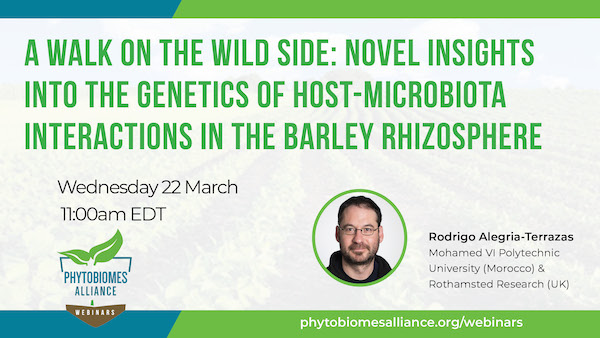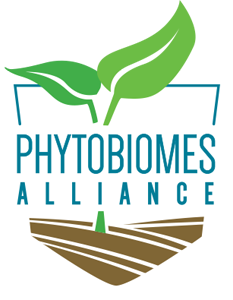
A walk on the wild side: novel insights into the genetics of host-microbiota interactions in the barley rhizosphere
March 22, 2023
Location
Online
Presenters
Rodrigo Alegria-Terrazas
Postdoctoral Researcher in AGBS, Mohamed VI Polytechnic University (Morocco)
Visiting Scientist in Sustainable Soils and Crops, Rothamsted Research (UK)
Outline
The microbiota thriving in the rhizosphere, the thin layer of soil surrounding plant roots, plays a critical role in plant’s adaptation to the environment. These microbial communities are not stochastically assembled from the surrounding soil, but their composition and putative function are controlled, at least in part, by the host plant genetics. As the rhizosphere microbiota represents an untapped resource of beneficial functions for the plant, dissecting the recruitment cues of these plant-microbial assemblages is at the centre-stage for sustainable crop production. The staple cereal barley, and its wild relatives, represent excellent models to study plant-microbiota interactions in crops subjected to domestication and further breeding selection.
We previously demonstrated that wild and domesticated barley genotypes host contrasting microbiotas and that this diversification mirrors the distinct eco-geographical constraints faced by their host plants. To gain insights into the functional significance of this, host-mediated, microbial diversification, we characterised the rhizosphere microbiota of selected wild and domesticated barley genotypes exposed to contrasting supplies of nitrogen, a rate limiting step for global crop production. This approach allowed us to identify nitrogen availability for plant uptake as a factor promoting the selective enrichment of individual taxa in the barley rhizosphere. Shotgun sequencing and metagenome-assembled genomes revealed that this taxonomic diversification is mirrored by a functional specialization of plants exposed to nitrogen conditions limiting barley growth. Finally, a plant soil feedback experiment revealed that host control of the barley microbiota underpins the assembly of a phylogenetically diverse group of bacteria putatively required to sustain plant performance under nitrogen-limiting supplies.
Taken together, our observations revealed a footprint of the host’s adaptation to the environment on the assembly of the bacteria thriving at the root–soil interface, that is maintained under nitrogen conditions limiting plant growth. Host-microbe and microbe-microbe interactions fine-tune the host genetic selection of the barley microbiota at both taxonomic and functional levels. The disruption of these recruitment cues negatively impacts plant growth.
References
- Alegria Terrazas, R., Robertson-Albertyn, S., Corral, A. M. et al. Defining Composition and Function of the Rhizosphere Microbiota of Barley Genotypes Exposed to Growth-Limiting Nitrogen Supplies. mSystems, 7(6), e0093422 (2022). https://doi.org/10.1128/msystems.00934-22
- Alegria Terrazas, R., Balbirnie-Cumming, K., Morris, J. et al. A footprint of plant eco-geographic adaptation on the composition of the barley rhizosphere bacterial microbiota. Sci Rep 10, 12916 (2020). https://doi.org/10.1038/s41598-020-69672-x
